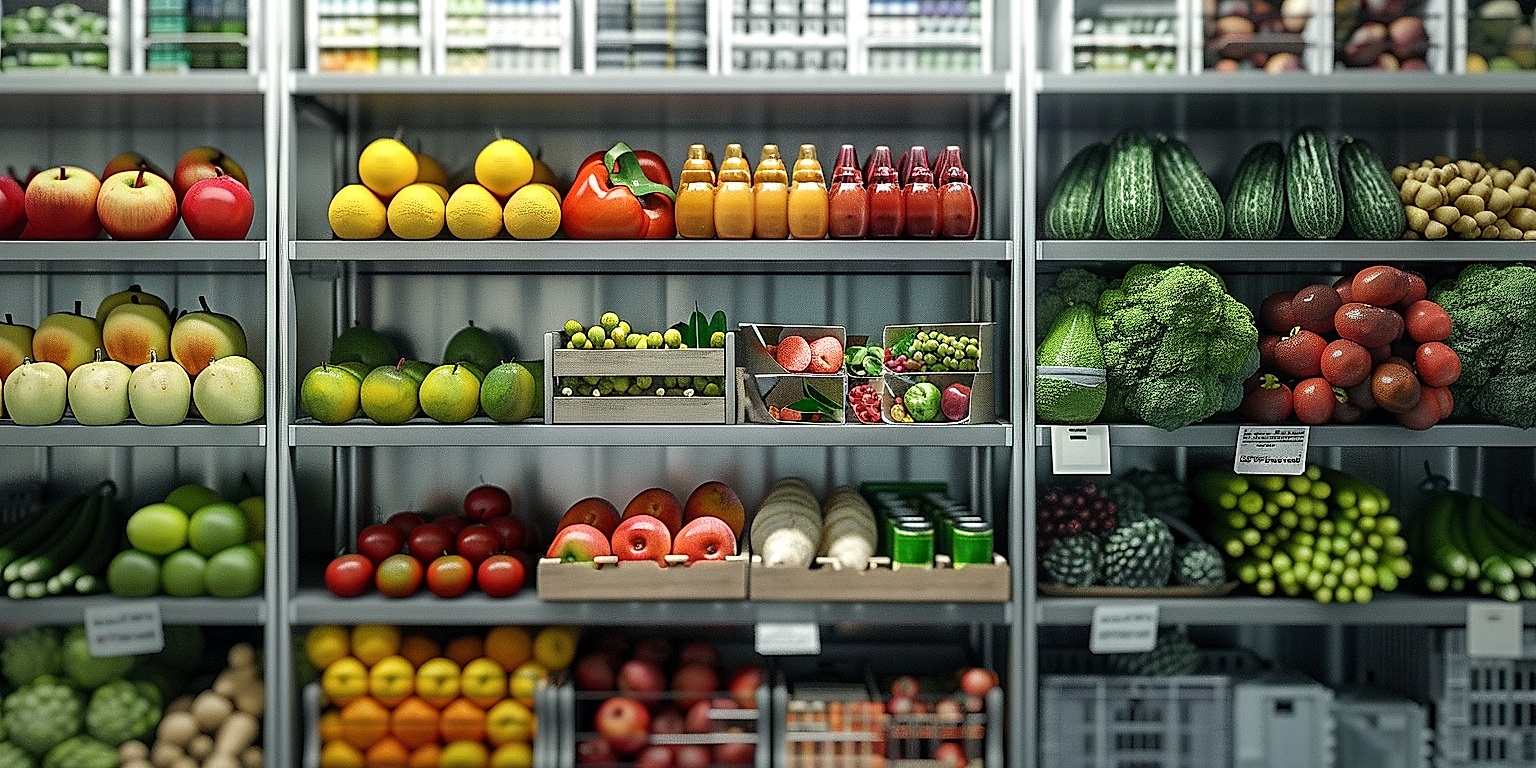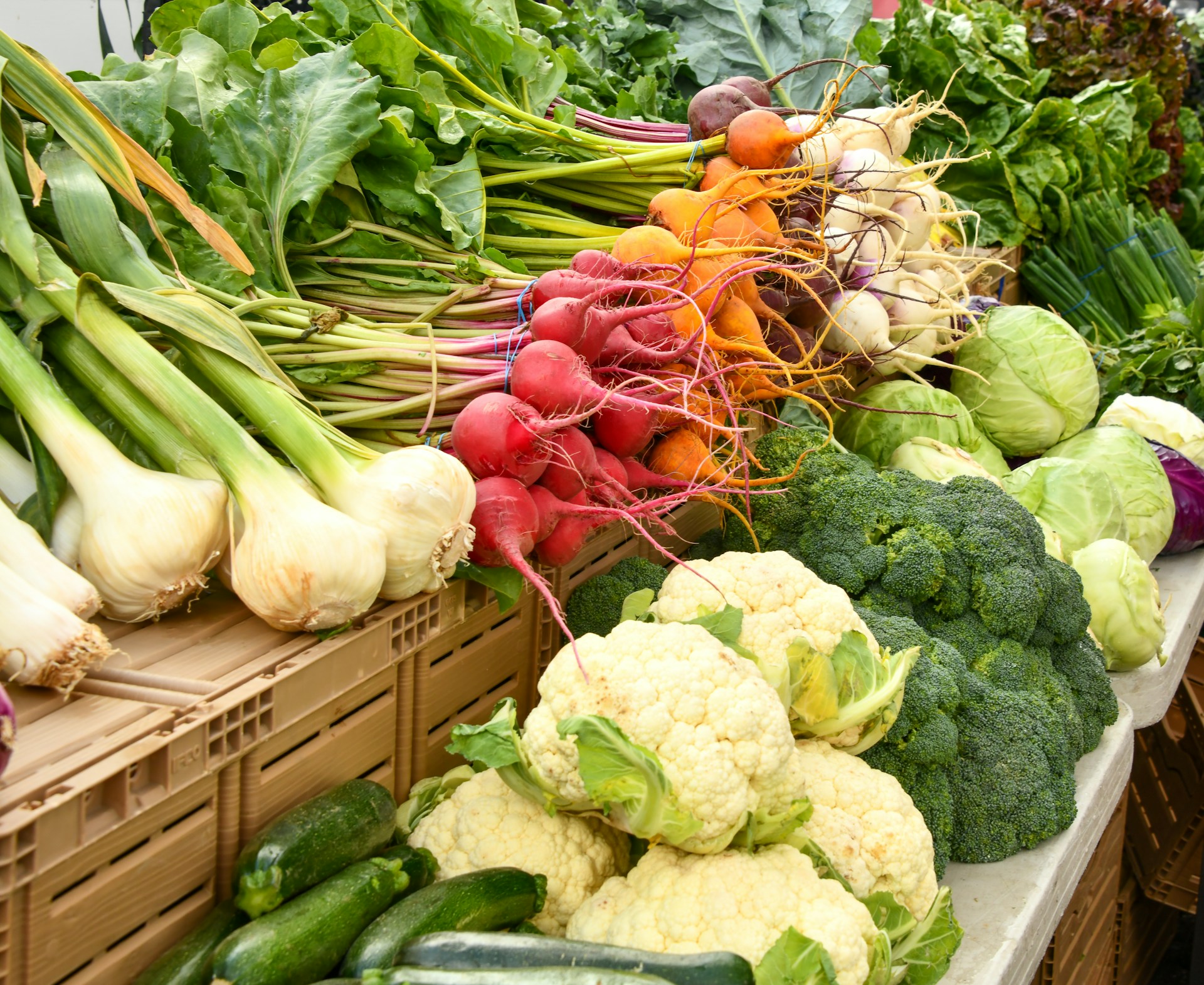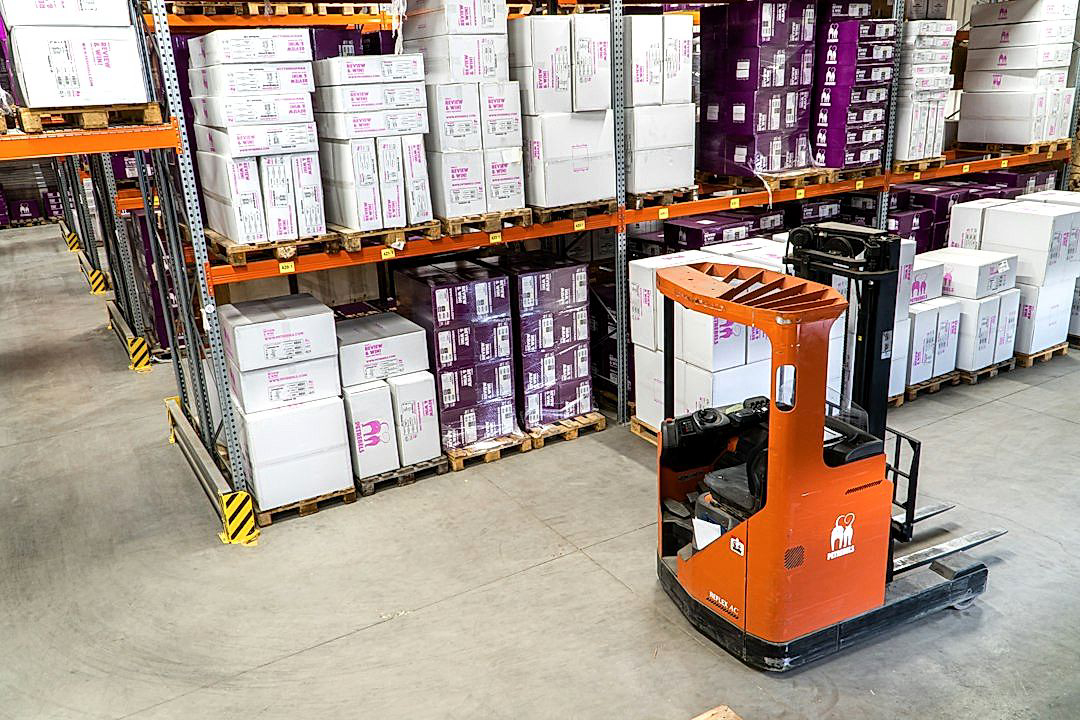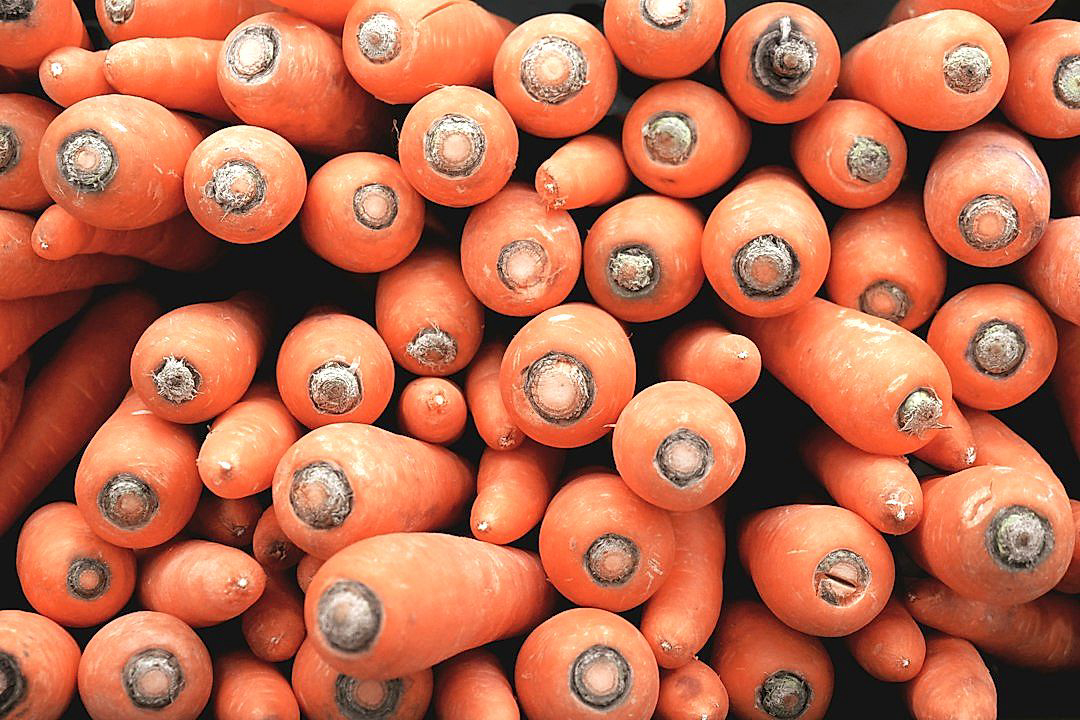Effective inventory management is the cornerstone of any successful produce distribution business.
Healthy profit margins hinge upon a flawless execution of stock control strategies particularly focused on factors such as seasonality.
The perishable nature of fresh foods requires a nuanced approach to ensure supply meets demand at all times.
By failing to account for differences in seasonal availability, businesses risk oversupply, waste, and a drop in sales due to lack of product variety.
This article will provide concrete, actionable tips to streamline your inventory system with regards to seasonality.
Each suggestion aims at improving your operational efficiency, reducing waste, and maintaining customer satisfaction.
Contents
- Seasonal Inventory Management Tips For Produce Distribution
- 1. Plan inventory based on seasonal produce availability
- 2. Forecast demand considering holidays and festivals.
- 3. Keep good supplier relationships for sudden shortages.
- 4. Identify alternative sources for out-of-season goods.
- 5. Prioritize high turnover products to reduce waste
- 6. Use First-In, First-Out (FIFO) for Perishable Items
- 7. Regularly audit inventory for quality and quantity.
- 8. Update inventory management software regularly.
- 9. Train staff on proper storage and rotation
- 10. Optimize Inventory Space for Efficient Storage
- The Bottom Line
Seasonal Inventory Management Tips For Produce Distribution
1. Plan inventory based on seasonal produce availability
In the realm of produce distribution, inventory management is pivotal to success, and its planning is fundamentally influenced by the reality of seasonal produce availability.
Understanding the seasonal nature of produce is integral in managing the inventory, ensuring that the stock level corresponds with the produce’s availability in various periods of the year.
Planning your inventory with seasonal availability in mind can assist in operating efficiently, reducing wastage, and maximizing profits.
This process begins with amassing a comprehensive understanding of when certain produce items are in season, and this involves thorough research and industry knowledge.
Knowledge about the seasonality of produce types should underpin any inventory planning strategy in the realm of produce distribution.
For instance, specific fruits and vegetables flourish in particular climates and seasons, thus being aware of this can help you predict the flow of these items into your inventory.
Next, inventory planning should address the expected duration of the produce’s peak season, which refers to the time frame when the supply is at its highest and prices at their lowest.
Efficient inventory planning would involve you stocking up during this time when prices are low and demand is high.
However, it is imperative not to over-stock, as this can lead to wastage if the produce is not sold within its shelf life.
To avoid such over-stocking issues, it would be beneficial to incorporate sales history data and current market trends into inventory planning, giving you an accurate estimate of required stock levels.
This approach can also help you decide on the volume of stock to reserve for spontaneous sales or unexpected orders.
Failing to factor in seasonal produce availability when planning inventory can result in under-stocking, manifesting as missed sales opportunities due to insufficient stock to meet demand.
Conversely, over-stocking because of inaccurate planning can lead to increased holding costs and potential wastage if the produce does not sell before it spoils.
To summarize, planning inventory, based on seasonal produce availability, will streamline your operations, minimize waste, and maximize sales and profits.
The task includes comprehending the seasonality of different produce items, predicting their availability and peak seasons, incorporating prior sales data into planning, and making provision for unexpected spikes in demand.
2. Forecast demand considering holidays and festivals.
In a field heavily influenced by seasonality like produce distribution, understanding the dynamics of demand is crucial.
The fluctuations in customer needs during holidays and festivals can greatly impact your inventory and distribution strategy.
Demand forecasting is a vital factor that significantly contributes to efficient inventory planning, especially during seasonal events.
It helps to guarantee that you have enough stock to meet the increased demand, without overstocking and risking waste of perishable goods.
Accurate demand forecasting further assists in maintaining good relationships with your suppliers as it allows for better communication about anticipated quantities needed and delivery schedules.
Understanding your customers’ purchasing behavior during specific holiday seasons or local festivals can help in forecasting demand accurately.
You can use historical sales data, current market trends, and predictive analysis to understand these purchasing patterns.
Promotions and discounts affiliated with these events also play a crucial role in the surge of demand, and should be factored into the forecast.
Aligning your inventory with expected sales based on these forecasts can help greatly reduce waste and increase profitability.
This alignment is even more critical when dealing with perishable goods, as the shelf-life and freshness of the product are high-priority considerations for customers.
By paying attention to seasonal events and holidays, and anticipating the fluctuations in demand that might occur, you can ensure the optimal rotation of goods and reduce the risk of spoilage.
Forecasting therefore is not just about estimating numbers, but also distinguishes between different product categories, identifying high sellers and low sellers during specific seasons or events.
These measures are also an opportunity to boost customer satisfaction by ensuring the availability of desired goods during high-demand periods.
The complexities of demand forecasting can be mitigated by using modern technologies like inventory management software and predictive analytics tools.
It is inevitable that there will be some degree of uncertainty in demand forecasting, but through meticulous analysis and strategic preparation, the risks can be significantly mitigated.
Recognizing the importance of factoring in seasonal events and holidays into your demand forecast can ultimately lead to a more profitable and efficient inventory management process in the produce distribution industry.
3. Keep good supplier relationships for sudden shortages.
Maintaining strong supplier relationships is a pivotal part of inventory management in any business, more so in produce distribution.
Given the seasonal and perishable nature of the produce, having trustworthy and reliable suppliers is key to managing unforeseen shortages.
These relationships are not built overnight, but over a consistent period of effective communication, prompt payments, and mutual respect.
A business should always make efforts to understand the constraints and capabilities of its suppliers.
When shortages do occur, a business with good supplier relationships is more likely to be given preference over competition in terms of procurement.
A solid relationship with your suppliers becomes even more vital during sudden shortages as they can prioritize your business above others.
To maintain these relationships, it’s crucial to provide timely and constructive feedback to suppliers.
This feedback communicates your commitment to the relationship and gives suppliers a chance to improve or maintain their performance levels.
It’s also important to keep suppliers informed about your business plans and any changes that might impact them.
Similarly, asking suppliers about their plans can give you a heads up on any changes that might require a shift in your strategy.
Another important aspect of maintaining a good supplier relationship is honesty in times of trouble.
If you are unable to make a payment or if there are quality issues with the produce, it is better to communicate openly and find a mutually beneficial solution.
Finally, showing appreciation to your suppliers is also an effective way to build a strong and trustful relationship.
Whether it is a simple ‘thank you’ note or a token of appreciation during industry events, these gestures signal that you value their services and their role in your business success.
By investing time and resources into building strong supplier relationships, businesses can ensure a consistent supply of produce, even in the face of sudden shortages.
Thus, good supplier relationships form a cornerstone in effective seasonal inventory management for produce distribution.
4. Identify alternative sources for out-of-season goods.
One of the key aspects of managing seasonal inventory in produce distribution is being able to identify alternative sources for out-of-season goods.
Understanding when and where specific crops grow during different seasons can help you determine alternative sources for your produce.
This can provide distribution with a continuous supply, maintaining the inventory for customers even when certain goods are not in season locally.
In the global food market, it’s likely that somewhere else in the world, your desired produce is in season.
Thus, forming relationships with international producers and distributors can be a strategic approach to ensure the availability of out-of-season goods.
Another alternative source could be greenhouse farmers who grow certain types of produce all year round.
In such cases, maintaining a balance of quality and cost due to potentially higher prices is necessary for sustainable inventory management.
Moreover, distribution can also consider stocking processed, preserved, or frozen versions of seasonal products, offering customers an alternative when fresh produce is not available.
For instance, during winter when tomatoes are off-season, canned tomatoes can be a suitable replacement in retail.
Frozen fruits and vegetables, as well as those preserved in jars, can also be categorized as out-of-season goods.
And they are steadily gaining popularity due to their convenience, longer shelf life, and relatively less price fluctuations.
Understanding customer trends and preferences related to these products can also assist in inventory planning of these alternative sources.
Lastly, proper research and risk assessment of these alternative sources are required as well, as they might present new challenges and operational adjustments for your distribution.
These might include new storage requirements, import-export regulations, or even logistics and transport considerations when dealing with international produce sources.
Thus, being well-prepared to adapt and manage these new sources can ensure a steady supply of out-of-season goods in your inventory, thereby contributing to a successful produce distribution.
5. Prioritize high turnover products to reduce waste
Prioritizing high turnover products within your inventory management is a strategic method to significantly reduce waste in any produce distribution business.
Such products are generally in high demand among your customer base and, consequently, sell out faster than others.
By focusing on these fast-moving items, you maintain a continuous flow of stocks, minimizing the chances that any items will become outdated or unsellable.
The concept of high turnover products refers to goods that are frequently restocked and sold, thereby maintaining an efficient inventory flow.
This strategy not only cuts down on waste but also increases overall profitability and customer satisfaction.
Every produce distributor should have a clear understanding of which products have the highest turnover rates.
Having this critical insight, you can then plan & align your purchasing decisions accordingly, always considering the demand and supply balance.
Furthermore, it allows for better space optimization in your warehouse as you tend to have just enough of these products, leaving room for other items.
On the other hand, maintaining an overstock of slow-moving items could result in excess waste, additional costs, and decreased profits.
Therefore, it’s crucial to identify, monitor, and prioritize your high turnover products correctly.
Employing advanced inventory management software can make this process easier and more efficient.
Such software would provide real-time data about all your products, including their turnover rates.
Finally, it’s equally important to educate your team about this prioritization strategy.
Everyone involved in the inventory process should understand the significance and benefit of prioritizing high turnover products.
Your staff should know that by focusing on these items, they can greatly contribute to reducing waste and, ultimately, increasing the profitability and sustainability of the business.
6. Use First-In, First-Out (FIFO) for Perishable Items
Seasonal inventory management, particularly in the field of produce distribution, requires keen attention to the life cycle of the fruits and vegetables being dealt with.
In doing so, it is necessary to invoke the principle of First-In, First-Out (FIFO) for perishable items.
The FIFO method means that whatever enters the stock first also leaves it first, hence the term ‘First-In, First-Out’.
This system minimizes spoilage and ensures peak freshness when the produce reaches the consumer.
The FIFO approach prevents the risk of rotting inventory that is overlooked, thus saving the distributor from financial loss and harmful effects on reputation.
Therefore, it is crucial to properly label the inventory with pertinent details such as the date of receipt, produce type, and expected spoilage date for effective implementation of the FIFO method.
The tracking of these details leads to a more systematic workflow and decreases the likelihood of errors occurring.
Furthermore, the FIFO approach is also beneficial in maintaining a healthier bottom line.
When accurately implemented, it ensures that the cost associated with each unit of inventory is matched correctly against revenue when the product is sold.
This results in more accurate gross profit calculations.
Another advantage of the FIFO method is its compliance with the default behavior of customers.
Customers typically pick the fresh items placed at the front, which naturally follows the FIFO principle.
Thus, providing a pleasing shopping experience for customers.
The principle of FIFO, while seemingly straightforward, can easily become complicated without systematic management.
It is recommended to use automated inventory management systems to streamline the process.
These systems can help to track and manage the inventory movement, maintaining the efficiency and accuracy of the FIFO method.
However, regular employee training is also necessary to ensure that they understand and efficiently implement the FIFO method.
Remember, an efficient FIFO system can significantly reduce waste, improve customer satisfaction and ultimately enhance the profitability of the produce distribution business.
7. Regularly audit inventory for quality and quantity.
Regular inventory audits play a critical role in sustainable inventory management for produce distribution.
Maintaining the quality of your inventory is crucial, especially in the produce industry where items are perishable.
Regular audits allow you to ensure that the items in the inventory have not exceeded their shelf lives and are therefore not prone to decay or spoilage.
Regular inventory audits not only ensure product quality, but also aid in accurate accounting and effective inventory planning.
The quantity part of the audit refers to the actual amount of items present in your inventory compared to the quantity that should be there according to the inventory records.
This helps to detect any early warning signs of discrepancies such as theft, or errors in recording inventory, among other possible issues.
Moreover, consistent inventory audits can eliminate potential stockouts and surplus, thereby maintaining an optimal inventory level.
If there is an overstock of products, the business could end up with a high level of waste, especially if the perishable goods are not sold on time.
On the other hand, running out of stock implies you could miss out on potential sales and even lose customers to competitors.
The frequency of inventory audits would depend on the type of goods you deal with, the size of your business, and the efficiency of previous audits.
It’s recommended to conduct inventory audits for produce distribution at least on a weekly basis, although this may be increased during peak seasons.
It’s crucial that during the audit, any product that is identified as being below quality standards or nearing expiration should be removed immediately from the shelf.
This is to prevent the possibility of customers buying poor-quality goods, which can hurt your business reputation.
Lastly, always update your inventory records to reflect these changes and ensure that your inventory management software is always up-to-date.
Regular inventory audits provide the most accurate and up-to-date snapshot of your current stock levels and condition, allowing for informed decision-making and efficient inventory management.
Indeed, inventory audits are arguably one of the most important components of the overall seasonal inventory management strategy for produce distribution.
8. Update inventory management software regularly.
Regular updating of your inventory management software is a critical component in effective seasonal inventory management for produce distribution.
Inventory management software helps you track and analyze your stocked goods, enabling efficient operations and minimizing errors.
With seasonal variations in produce availability, the importance of maintaining an up-to-date inventory management system cannot be overstated.
This software not only keeps tabs on the type and quantity of products in stock but also provides relevant data for making informed inventory decisions.
Prioritizing regular software updates ensures that you benefit from the newest features and fixes that can help streamline your inventory management processes.
Modern inventory management software often incorporates advanced technologies such as artificial intelligence (AI) and machine learning, which can automate many inventory-related tasks and provide highly accurate forecasts.
Updating your software can serve to optimize these benefits, delivering increased automation and more precise forecasting abilities.
Moreover, inventory management software developers are constantly working to identify and correct software bugs.
By regularly updating your software, you help ensure any potential system flaws are addressed, thereby maintaining the operational integrity of your inventory management processes.
Another advantage of regular software updates is the improved data security.
Updated software versions come with the latest security protocols to guard against potential cyber threats, which is crucial in the era of growing cybercrime incidents.
Apart from updating the software, it’s also important to periodically review and update the data inputs in the software to reflect the current inventory conditions.
For instance, if you’ve sourced new suppliers or there’s a new seasonal fruit variety, such nuances should be carefully recorded in the software.
Regularly updating both the software and the data contained within helps maintain an accentuated view of your inventory, which will facilitate easier tracking, management, and making informed forecasting decisions.
Doing so plays a substantial role in ensuring the smooth handover of operations when there’s a change in personnel or during routine audits.
In order to reap the full benefits of your inventory management software, valid training to the staff on how to use the updated software effectively is also a must.
9. Train staff on proper storage and rotation
The success of managing a seasonal inventory in produce distribution largely relies on the competence and knowledge of the staff handling it.
You need people who understand the importance of proper storage practices and the correct rotation of goods.
It becomes essential that staff members receive thorough training to ensure the correct handling and storage of every type of produce.
Fruits and vegetables vary significantly in their storage requirements not only between different types but also between varieties of the same type.
For instance, some fruits produce ethylene gas, which can speed up the ripening process, so it is important to store these away from ethylene-sensitive produce.
This type of knowledge is something that needs to be incorporated in the training program, as it can significantly reduce spoilage and waste.
In addition, training should also encompass the importance of rotation of produce goods, which supports the idea of a First-In, First-Out (FIFO) system in the inventory management strategy.
Staff members need to understand that the oldest products need to be used first, to prevent them from staying in the storage for too long and potentially going to waste.
Rotation of goods also monitors the inventory and helps in identifying the products that need replenishing, or those that are not moving as expected, helping to avoid future overstocking or under stocking situations.
Regular training sessions can help to reinforce these concepts and to ensure that new hires are well versed with the best practices of seasonal inventory management.
Besides, refresher training opportunities give employees a chance to ask questions and clarify any doubts they may have, making them feel more empowered and informed to carry out their job effectively.
Not to mention, targeted training can also boost staff morale and job satisfaction, which in turn benefits the overall productivity of the business.
To make the training more effective, it can be beneficial to use a mix of theoretical and practical sessions, possibly including real-life scenarios and role-plays.
This not only helps to convey the information effectively but also tests the staff’s understanding of the subject matter, ensuring they are competent enough to handle the seasonal inventory.
It is also important to emphasize the need for adherence to safety protocols and hygiene standards during these training sessions, to maintain the health and safety of both the staff handling the produce and the consumers.
Another key aspect of training should focus on efficient space utilization in the storage areas, as this can significantly aid in reducing the waste that occurs due to improper storage and mishandling of goods.
These are all the ways in which you can ensure a proficient staff, who can be the backbone to a thriving seasonal inventory in produce distribution business.
10. Optimize Inventory Space for Efficient Storage
The effective optimization of inventory space plays a critical role in ensuring efficient storage of produce, especially for those in the distribution business.
This not only allows for better organization within your warehouse or storage facility, but also improves accessibility to various types of goods.
Strategic inventory space optimization can significantly reduce the time and labor required for staff to locate and move items, enhancing overall productivity.
In addition, when your inventory space is well-organized, it becomes easier to do a quick inventory check and to identify products that are close to their expiration date or that need to be sold quickly.
There are different strategies that can be employed in order to maximize the use of storage space.
A common technique is vertical stacking, where items are stored on high shelves or racks. This not only saves floor space but also makes it easier to view and access products.
Another strategy is cross-docking, a practice where incoming shipments are directly transferred to outgoing trailers with little to no storage in between. This reduces the need for storage space and minimizes handling costs.
Implementing a centralized storage system could also help as it stores products in a central location, reducing the amount of space needed and improving retrieval efficiency.
It is also important to regularly reassess the effectiveness of your storage techniques in order to make sure they are still the best choice for your current inventory levels and product variety.
Furthermore, using modern inventory management software can aid in optimizing storage as these systems can provide real-time data about product location, quantity, and movement throughout your facility.
Apart from these strategies, it is essential to keep your inventory area clean and well-maintained.
A cluttered or dirty storage space can not only lead to loss or damage of products, but also poses safety risks for your employees.
Lastly, ensure your storage systems are scalable.
In the volatile industry of produce distribution, it is essential to remain agile and adaptable to sudden changes in demand.
A scalable storage solution should allow for expansion or reduction as necessary, without sacrificing the efficiency and organization of the operation.
The Bottom Line
Managing inventory in the grocery business effectively requires a well-planned and streamlined approach.
Keeping an eye on seasonal produce availability, attuning to festive demands, and managing good supplier relationships can help ensure consistency in stock levels.
At the same time, it’s critical to locate alternative sources for non-seasonal goods and prioritize high-turnover products to minimize waste.
Adapting First-In, First-Out (FIFO) policies would invariably mitigate spoilage, and regular audits can safeguard both quality and quantity of goods.
Additionally, keeping inventory management software updated and providing staff training on proper storage and rotation can significantly enhance operational efficiency.
Finally, optimizing storage space can lead to an increase in efficiency, further fortifying a successful inventory management operation.




